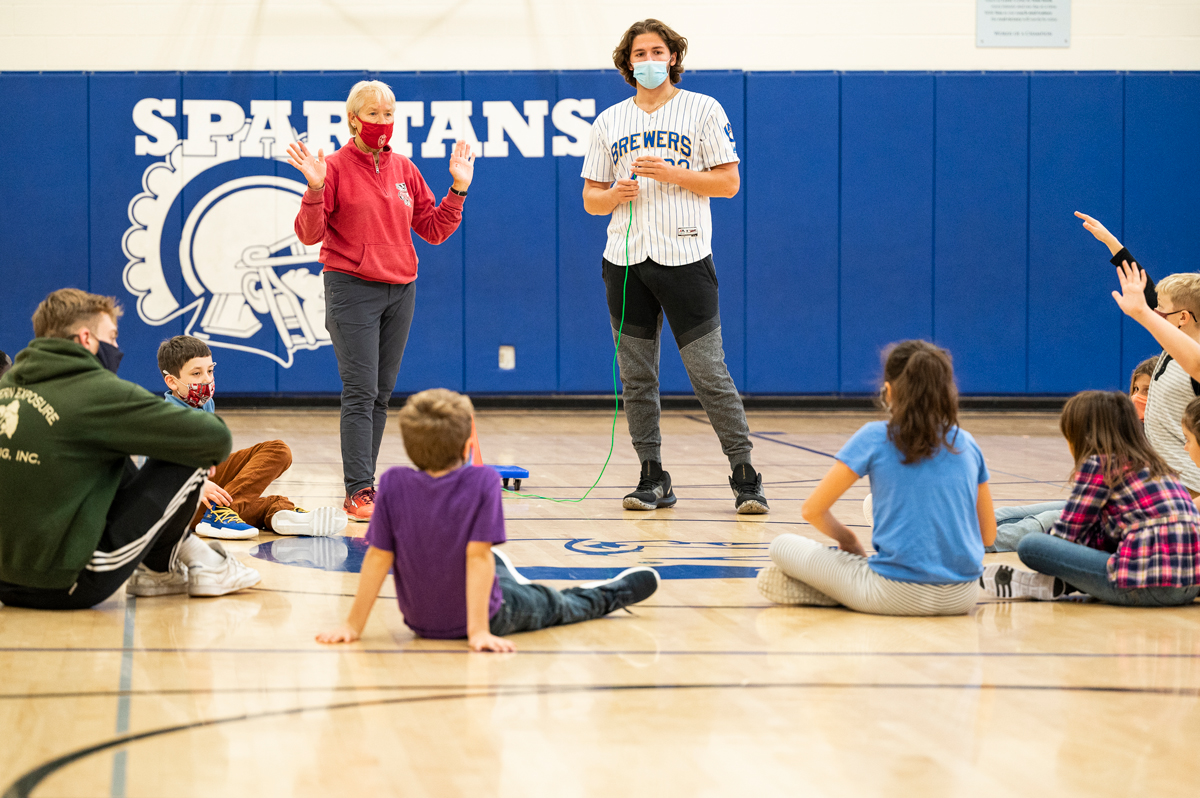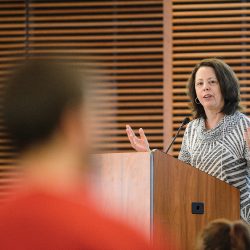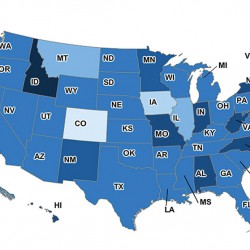Student Teaching in a Pandemic
In the coronavirus era, it takes creativity to provide a workplace-experience course.

Kuhrasch (standing at left) goes above and beyond to provide a meaningful experience for student teachers. Bryce Richter
In today’s increasingly digital world — accelerated by a pandemic — it may be tempting to question the necessity of in-person college coursework. But not if you’re in training to become a physical-education teacher.
A semester of student teaching is the final piece of coursework for physical-education majors at UW–Madison and a state requirement for licensure. “It’s the time when they find out, ‘Wow, I can really do this,’ ” says Cindy Kuhrasch, coordinator for the UW’s physical-education program.
With all Dane County public schools beginning the year online, Kuhrasch turned to St. James Catholic School just south of campus, whose younger students were returning to the physical classroom. The school then turned to her. Its physical-education teacher took a leave of absence because of family concerns, so Kuhrasch filled the position herself and became the cooperating teacher for her UW students.
Her willingness to go above and beyond to provide a comparable experience for her students in a time of pandemic is shared by many instructors across campus. When the UW reopened this fall with 8,000 undergraduate course sections, roughly two-thirds of them had fully transitioned to an online format, a quarter remained face-to-face, and a tenth took a hybrid approach.
Kuhrasch’s workplace-experience course is a hybrid of sorts, as the student teachers are tasked with developing virtual lesson plans via Google Classroom for the older students and for younger students opting to learn from home. One of the first assignments? Going for a walk and showing neighbors that they care by wearing a mask and keeping a safe distance.
This year, the UW students may be gaining more experience as they learn to assess physical, social, and cognitive development in person and from afar. The unusual circumstance has also created a unique bonding experience for the student teachers, who are typically spread out at schools around the county.
“Because they’re all here, the conversations they’re having are so rich,” Kuhrasch says. “I walk in and it sounds like a teachers’ think tank. They’re just bouncing ideas off one another, like, ‘Maybe this will be too hard for this class, or we should think about this kid’s needs.’ It’s really incredible.”
Published in the Winter 2020 issue



Comments
No comments posted yet.